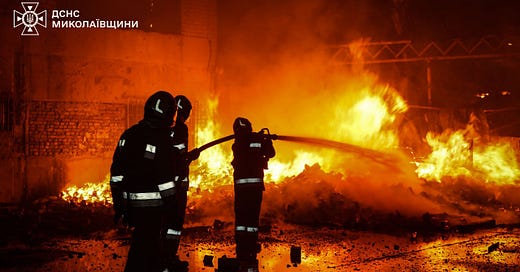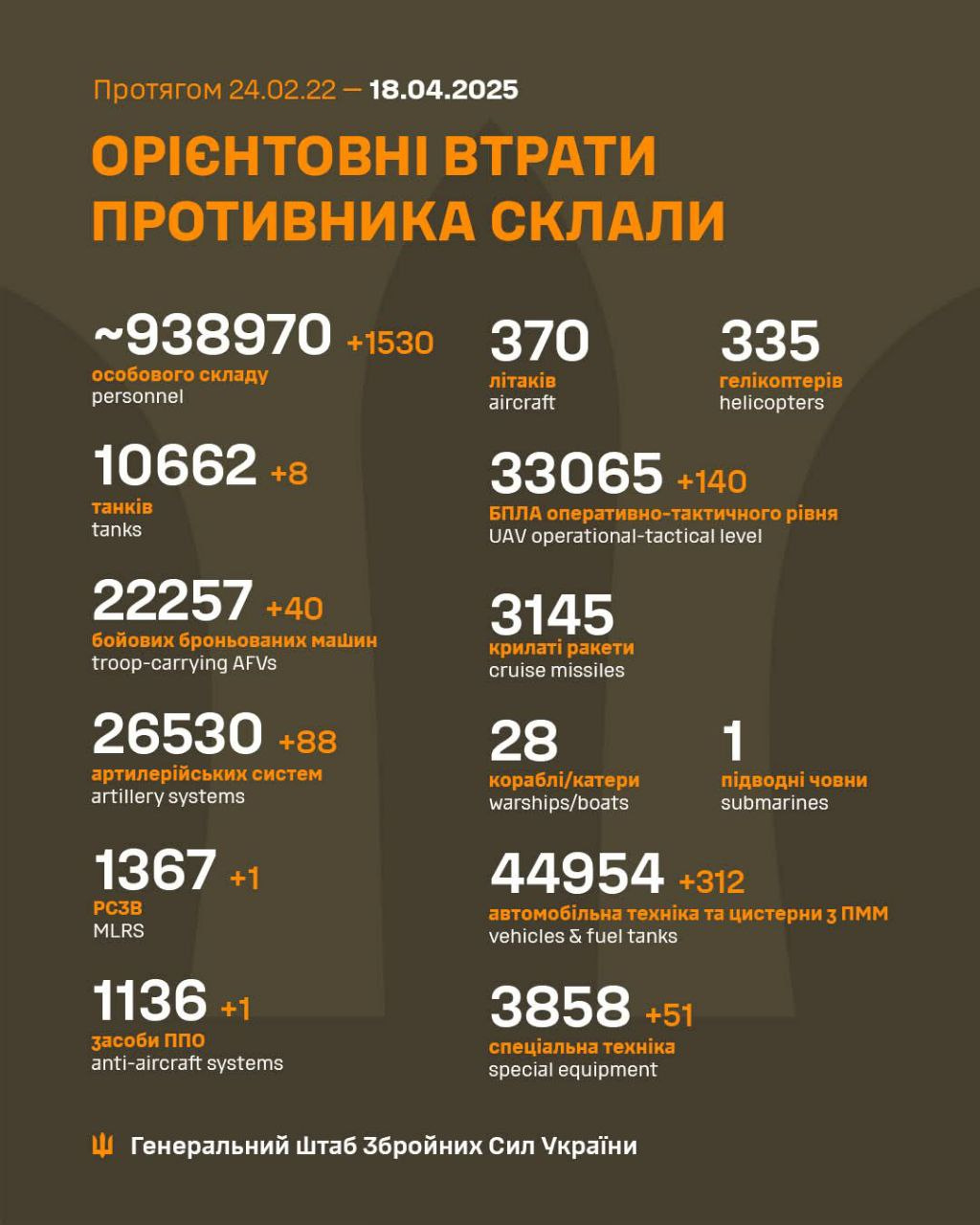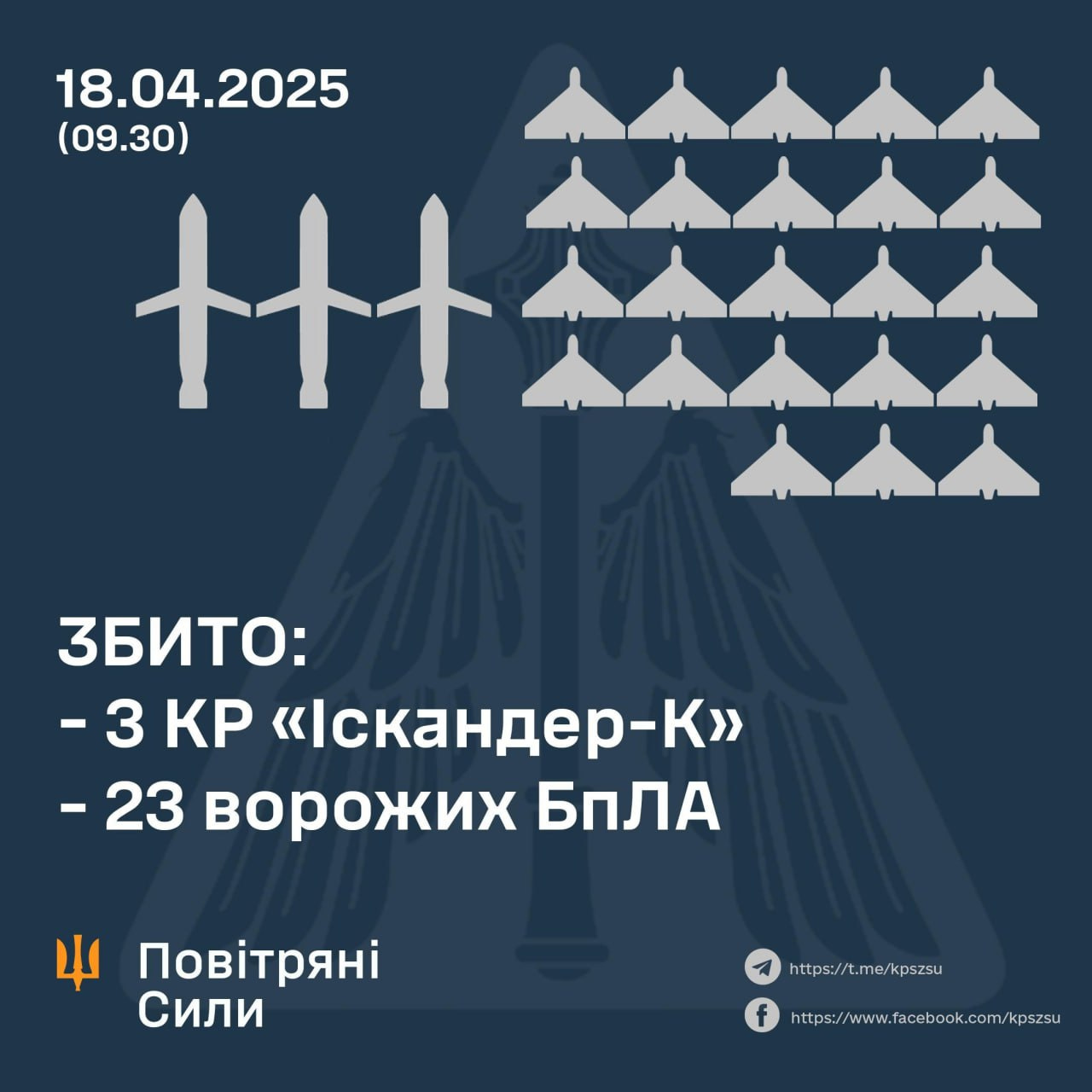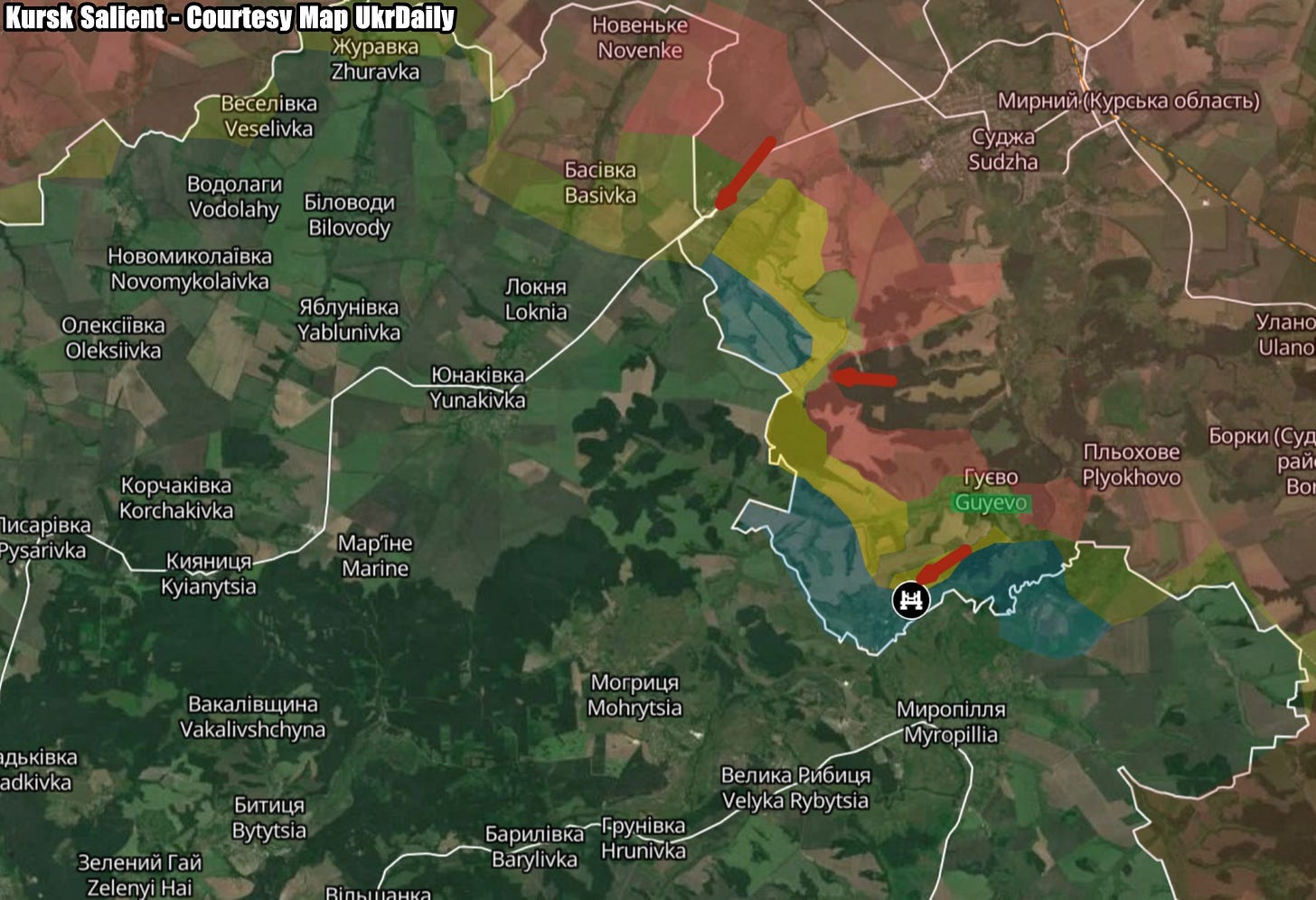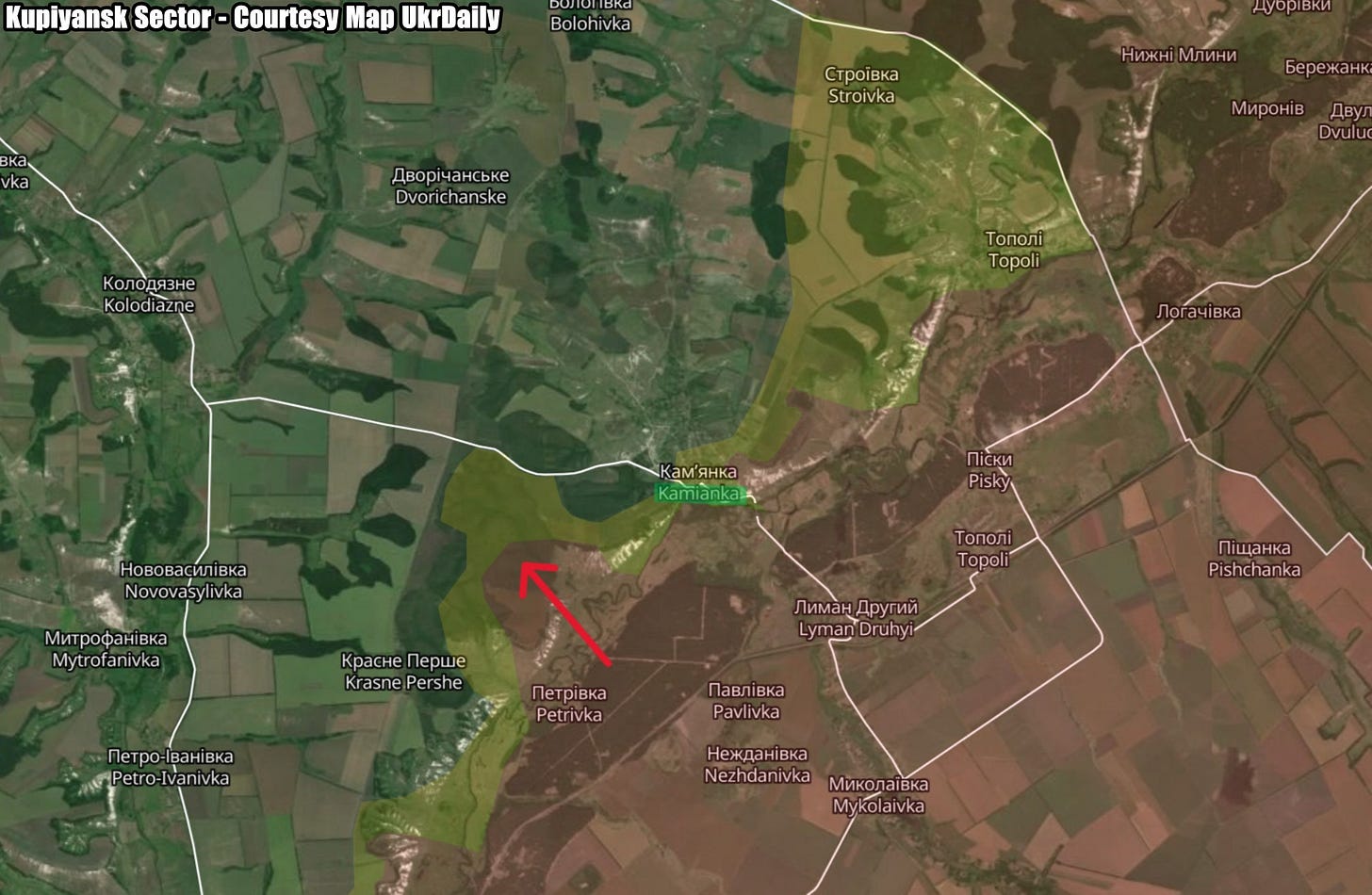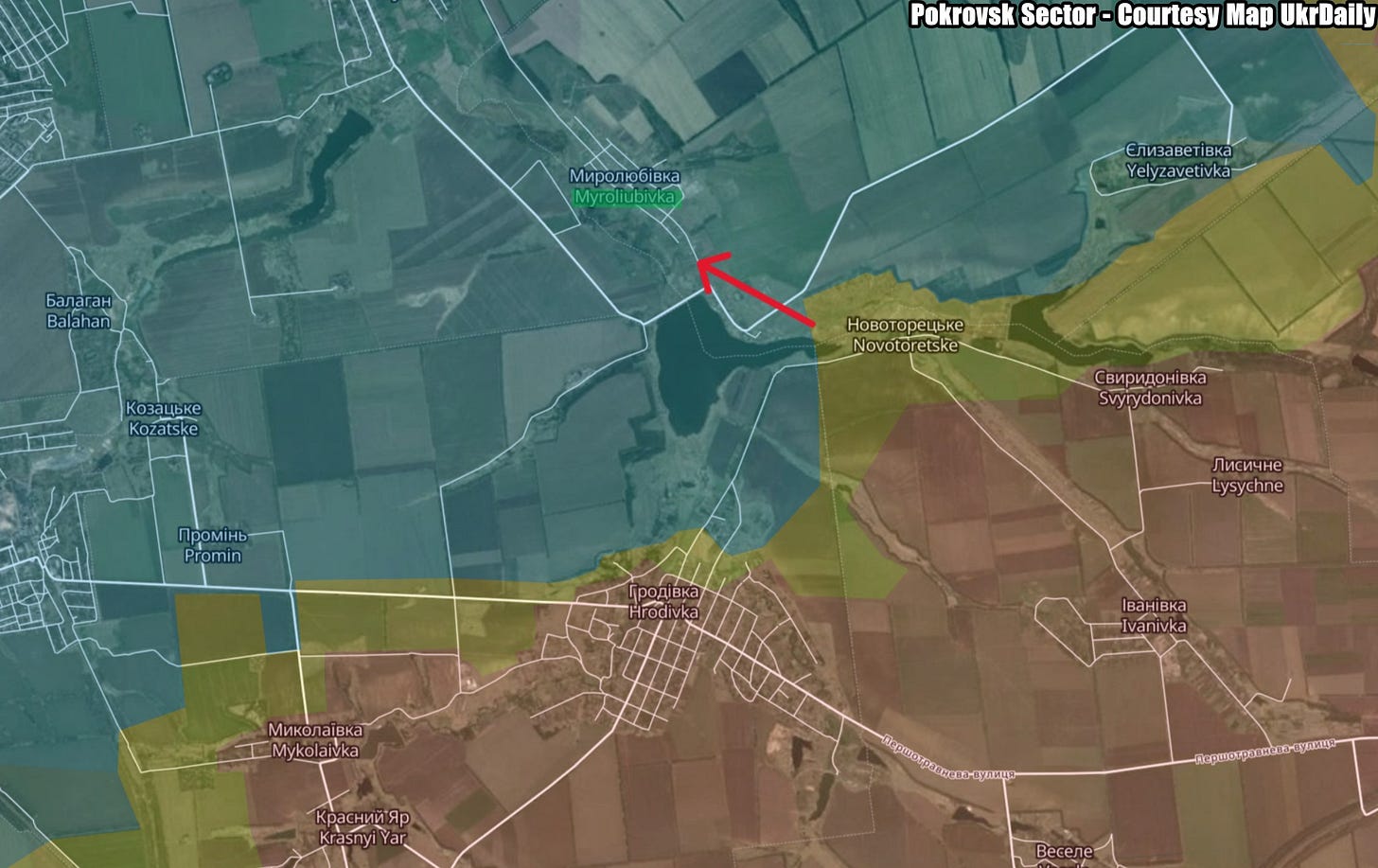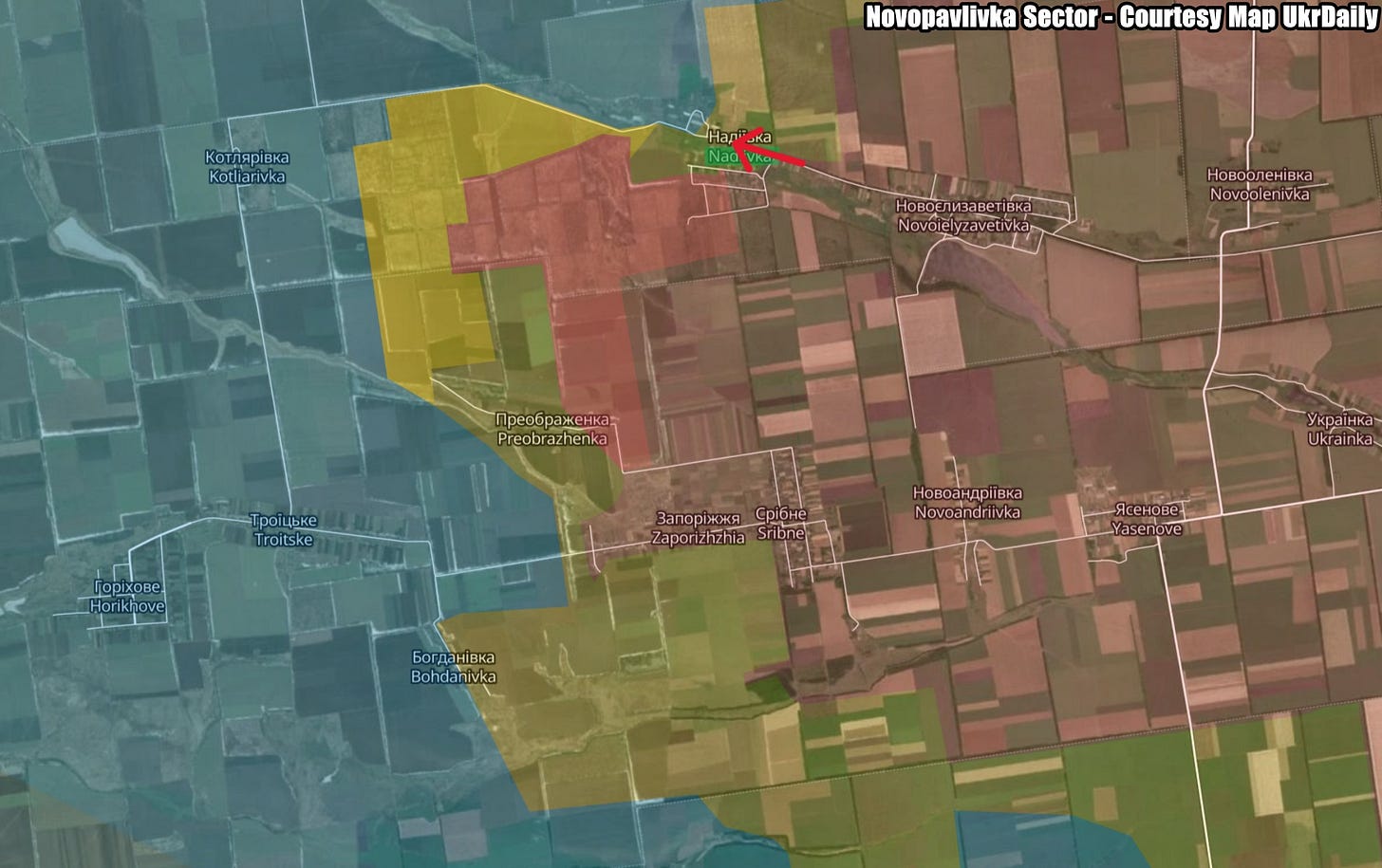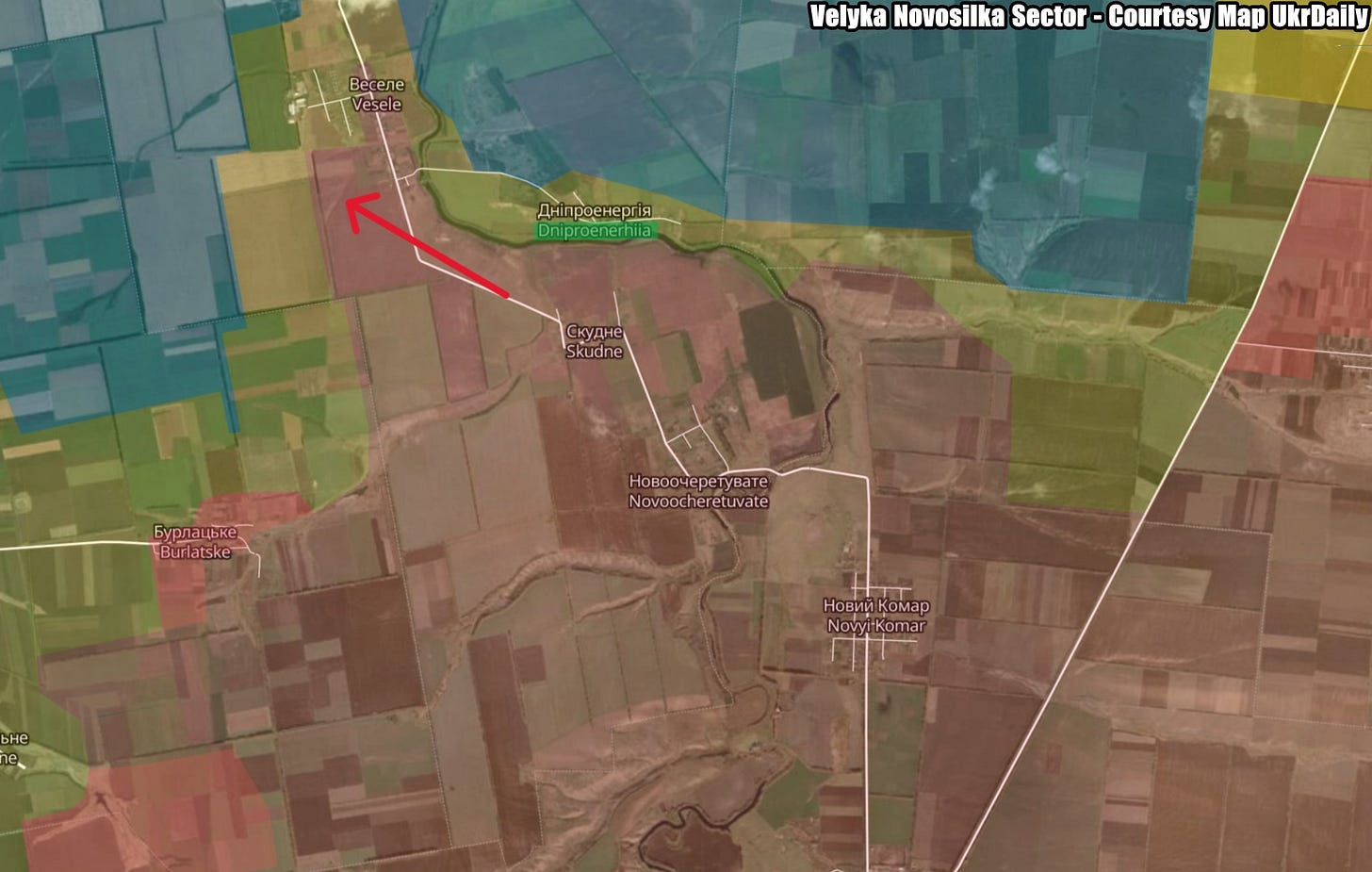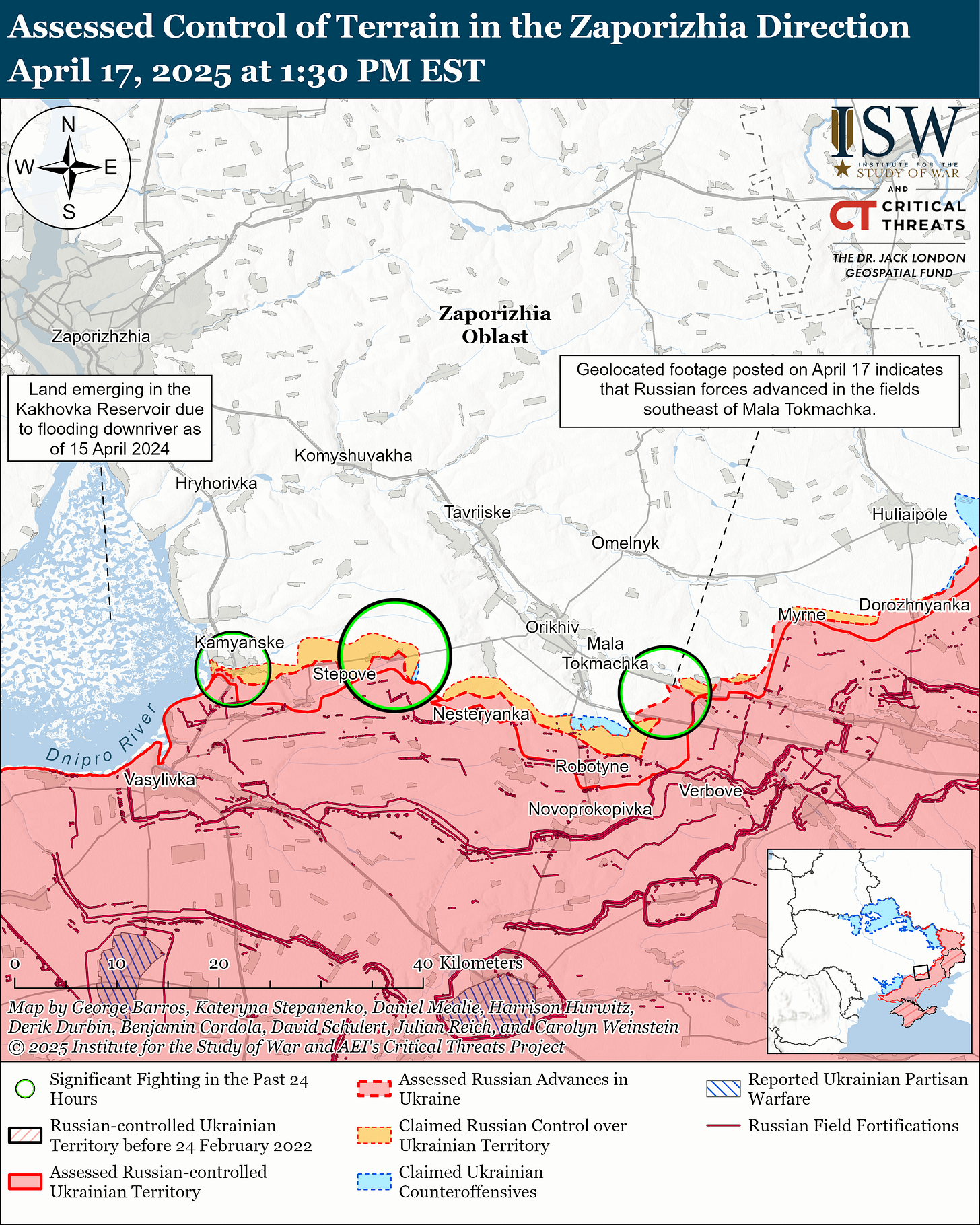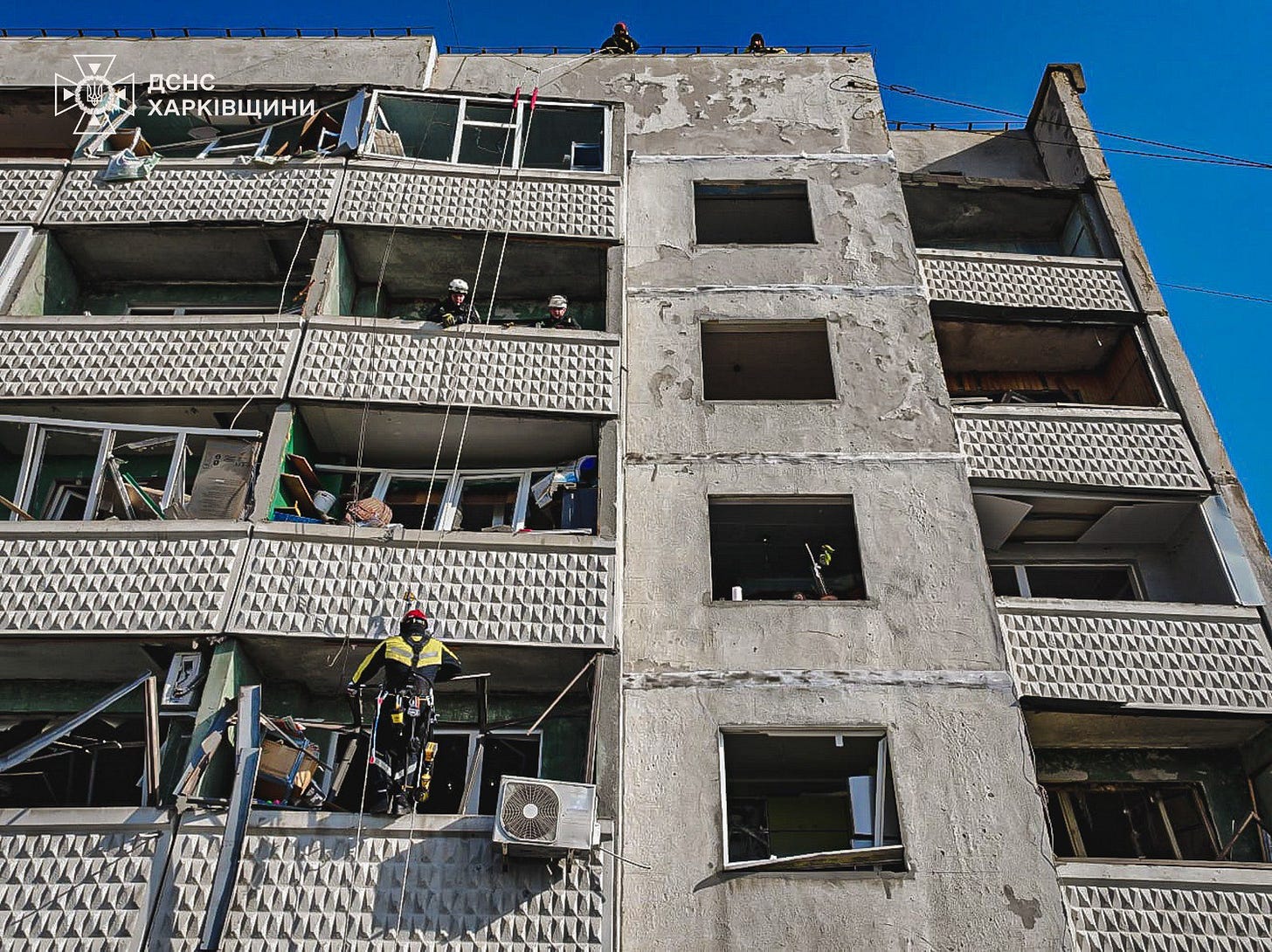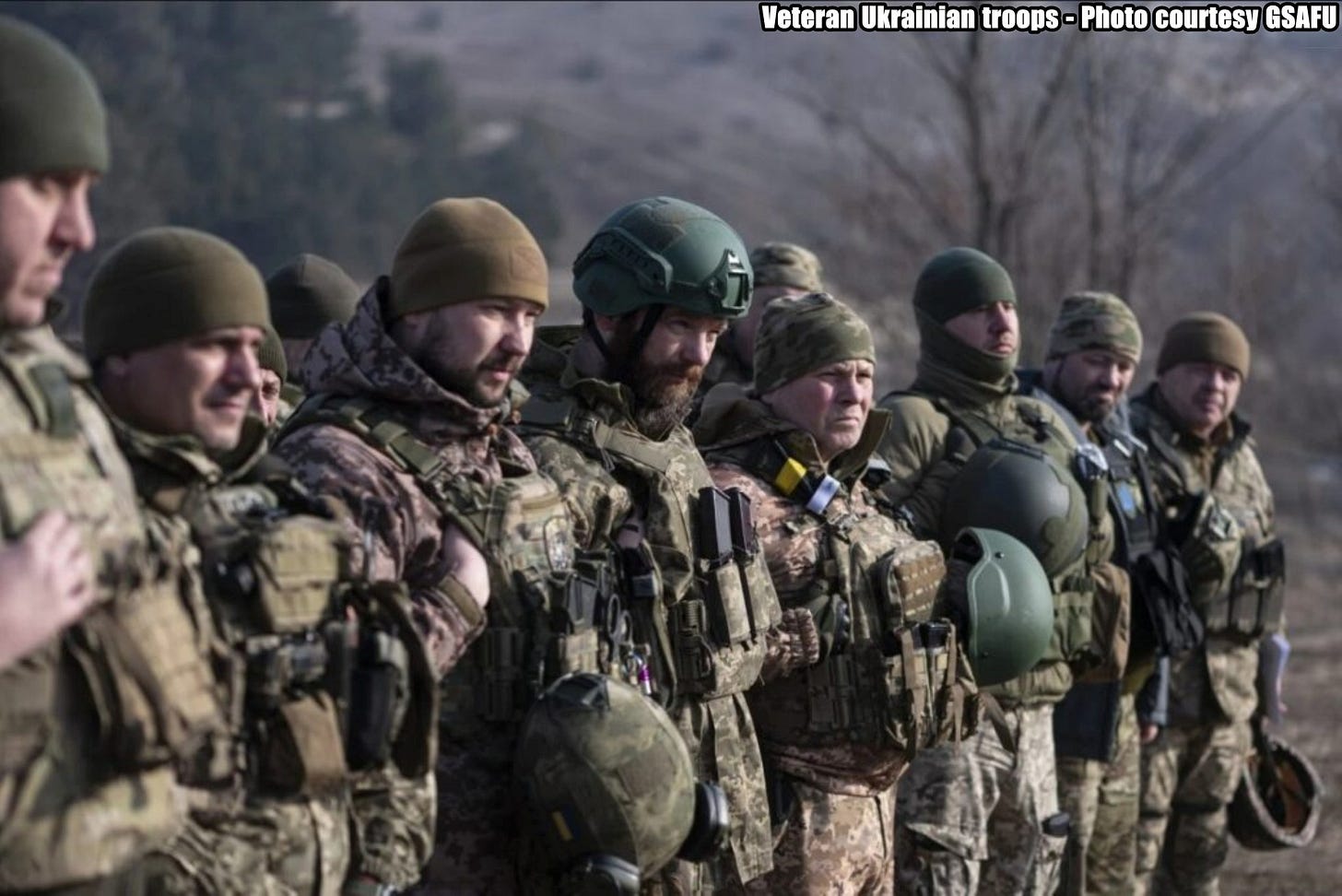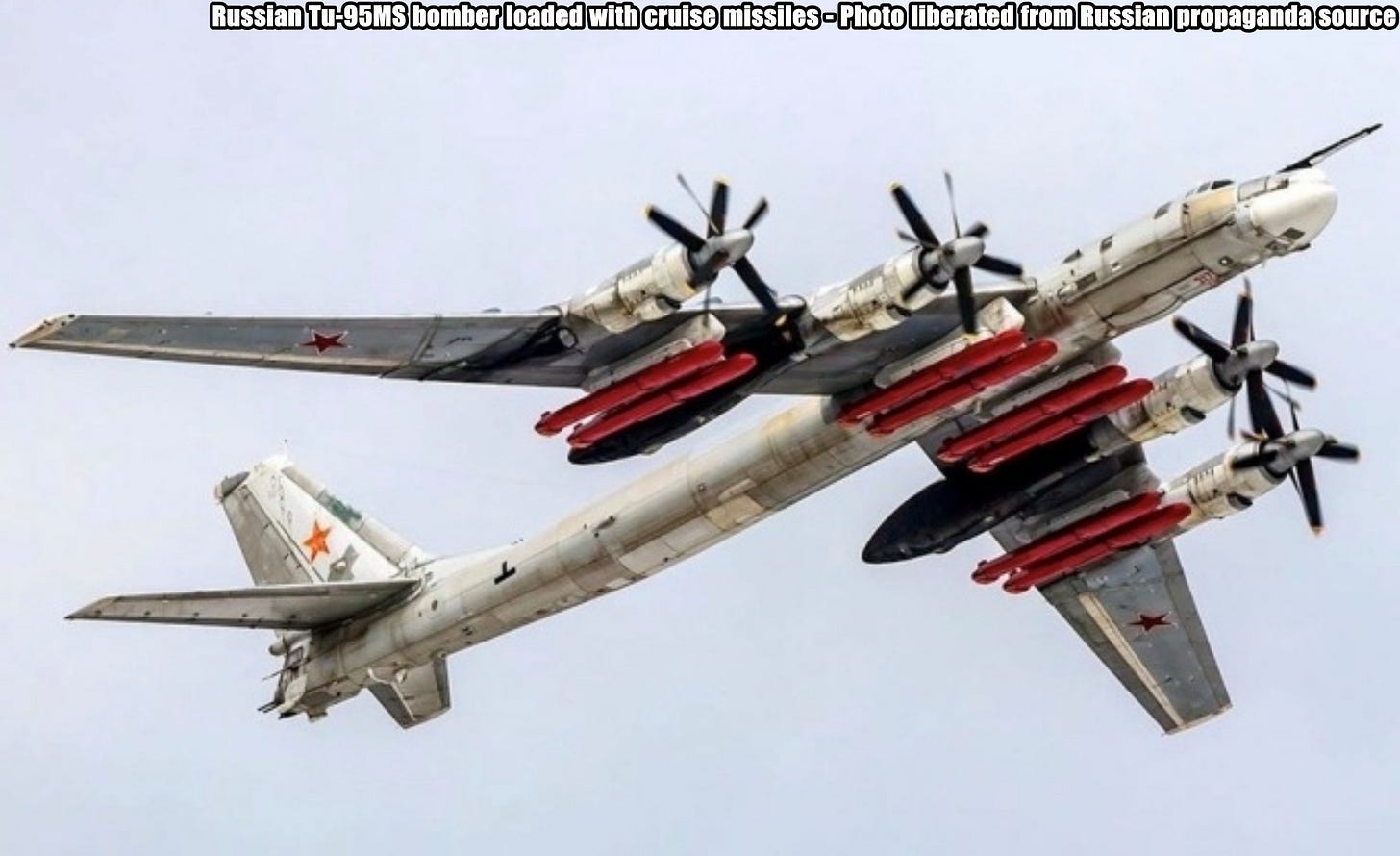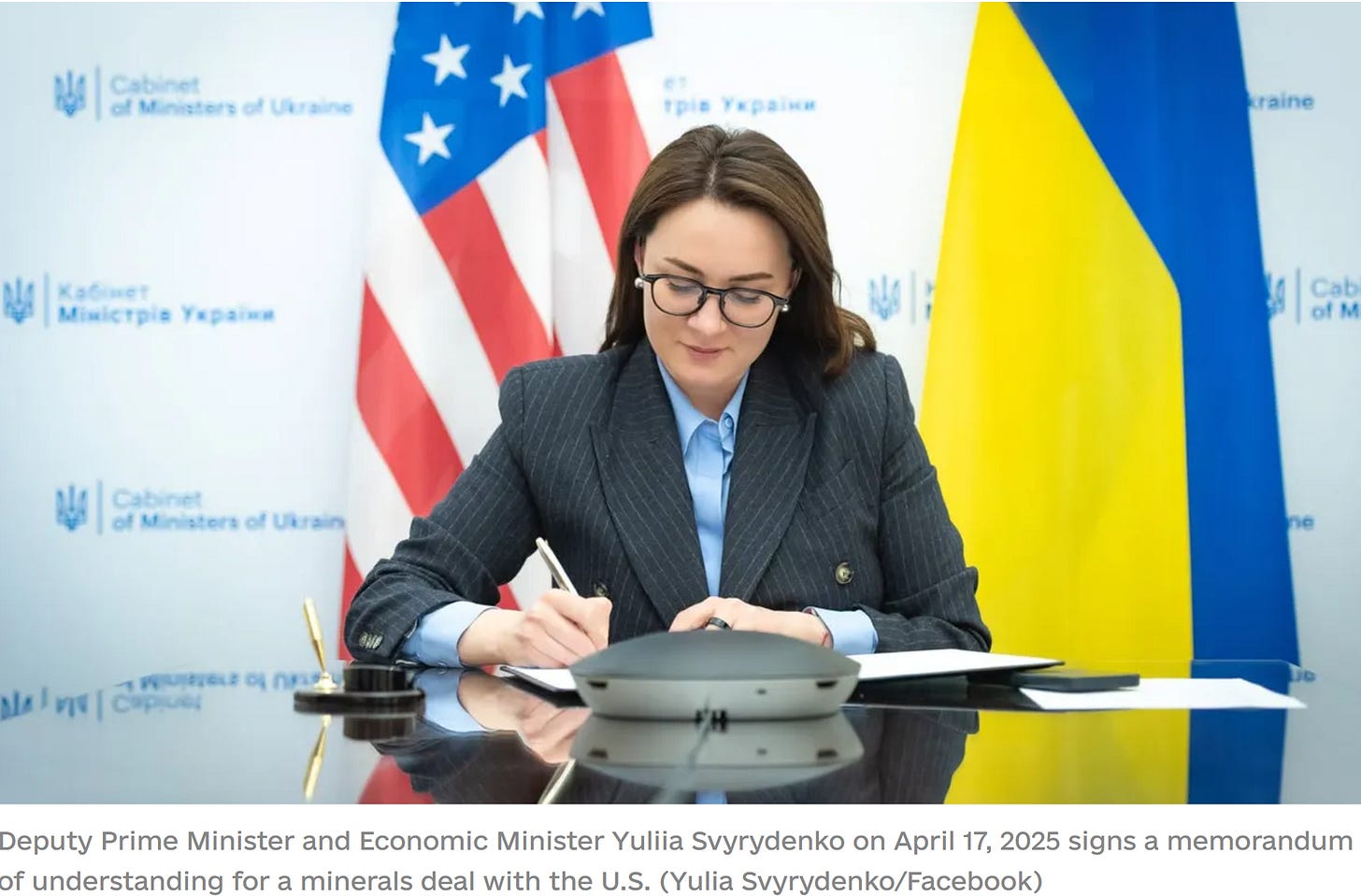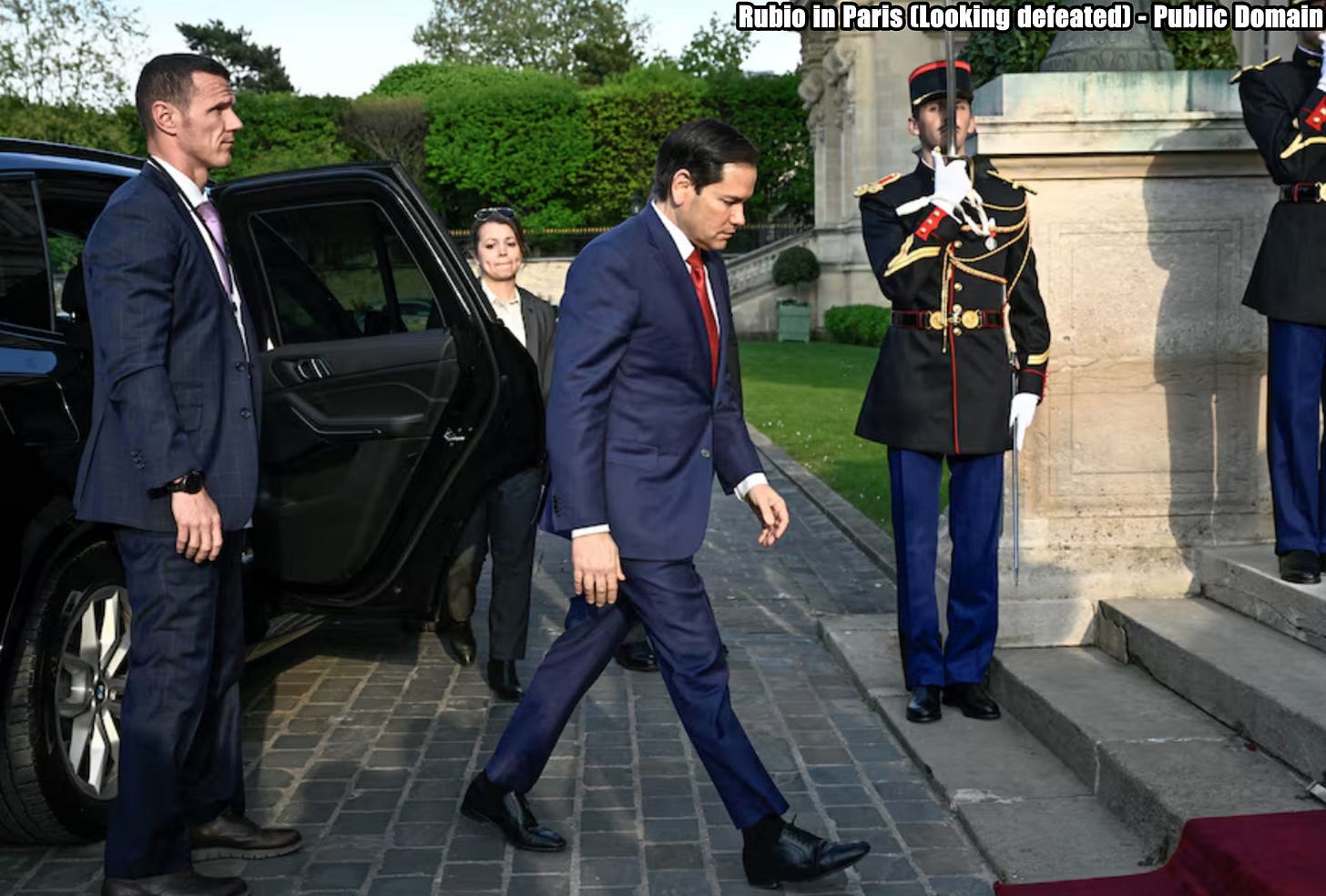Slava Ukraini! In early 2022 I began a Telegram channel aggregating news from a number of sources daily on the war in Ukraine. In June 2023 I began providing a daily draft for the Ukraine War Brief Podcast collecting news from over 70 sources daily, which formed the basis of the script. While the Podcast no longer exists I have continued to make this Brief available for my followers here on Substack for those who wish to keep up with the news from the war.
All the latest news on the Russo-Ukraine War 6 days per week
ALONG THE CONTACT LINE
GSAFU Morning Report
For: Apr 18, 2025
The General Staff of the Armed Forces of Ukraine in its Operational Information update at 08:00 on Apr 18 stated that day 1150 of the full-scale invasion of the Russian Federation against Ukraine had begun.
The situation on the line of combat remains tense in some sectors. Ukrainian defenders continue to actively counteract the Russian aggressor, causing them significant losses in personnel, equipment and technology. Exhausting the enemy along the entire front line and continuing to disrupt the plans of Russian occupiers to advance deeper into the territory of Ukraine.
During the past day, 143 combat engagements took place.
Over the past 24 hours, the enemy carried out 2 missile strikes, 94 air strikes, used 3029 drones and fired approximately 6507 artillery shells across the positions of Ukrainian forces and civilians.
Air Force Daily Report
3 CRUISE MISSILES, 23 ENEMY UAVS SHOT DOWN, 10 SIMULATOR UAVS FAILED TO REACH THEIR TARGETS (LOCATIONALLY LOST)
➖➖➖➖➖➖➖➖➖
On the night of April 18, 2025 (7:30 p.m. April 17), the Russian occupiers launched a strike on Ukraine with ground-based missiles and strike UAVs.
According to preliminary data, the Air Force radio-technical troops detected and escorted 43 enemy air attack vehicles — 6 missiles of various types and 37 strike UAVs (simulator drones of other types), including:
- 1 Iskander-M ballistic missile (launch area – Crimea);
- 5 Iskander-K cruise missiles (launch areas - TOT Zaporizhia region, Crimea);
- 37 Shahed attack UAVs and other types of simulator drones (launch areas – Millerovo, Kursk — Russian Federation).
The enemy air attack was repelled by aviation, anti-aircraft missile units, electronic warfare equipment, and mobile fire groups of the Defense Forces of Ukraine.
As of 09:30, the downing of 26 air targets was confirmed:
- 3 Iskander-K cruise missiles;
- 23 Shahed attack UAVs.
10 enemy drone simulators - lost in location.
As a result of the enemy attack, the following regions suffered: Sumy, Kharkiv, Dnipropetrovsk, Mykolaiv, and Kyiv.
Combat Operations in the Russian Federation
The Institute for the Study of War (ISW), a US based think tank, in its Apr 17 Russian Offensive Campaign Assessment reported that:
Kursk Salient: Russian forces recently advanced in Kursk Oblast.
Geolocated footage published on Apr 16 indicates that Russian forces recently seized the St. Nicholas Monastery southwest of Guyevo (south of Sudzha near the international border).
Belgorod Incursion: Fighting continued in northwesternmost Belgorod Oblast on Apr 17, but Russian forces did not make confirmed advances.
The Khortytsia operational-strategic group
(Responsible for the northeastern part of Ukraine. )
Kupyansk Sector: Russian forces recently advanced in the Kupyansk direction.
Geolocated footage published on Apr 17 indicates that Russian forces recently advanced east of Kamyanka (northeast of Kupyansk near the international border).
Toretsk Sector: Ukrainian and Russian forces recently advanced in the Toretsk direction.
Geolocated footage published on Apr 16 indicates that Ukrainian forces recently advanced in western Druzhba (northeast of Toretsk).
Geolocated footage published on Apr 16 and 17 indicates that Russian forces recently advanced in northern and northwestern Toretsk and in the Novotoretska mine northwest of Torestk.
The Tavria operational-strategic group
(Responsible for the central-eastern and southeastern part of Ukraine.)
Pokrovsk Sector : Russian forces recently advanced in the Pokrovsk direction.
Geolocated footage published on April 17 indicates that Russian forces recently advanced east of Myrolyubivka (east of Pokrovsk).
Novopavlivka Sector: Russian forces recently advanced in the Novopavlivka direction.
Geolocated footage published on Apr 17 indicates that Russian forces recently advanced into northern Nadiivka (east of Novopavlivka).
Velyka Novosilka Sector: Russian forces recently advanced in the Velyka Novosilka direction.
Geolocated footage published on Apr 17 indicates that Russian forces recently marginally advanced southeast of Dniproenerhiya (north of Velyka Novosilka).
Zaporizhia Sector: Russian forces recently conducted a roughly battalion-sized mechanized assault across a wide front in western Zaporizhia Oblast, representing an inflection in recently observed Russian mechanized assault tactics.
Ukrainian military officials reported on Apr 17 that Ukrainian forces repelled a series of mechanized assaults by elements of the Russian 58th Combined Arms Army (CAA) (Southern Military District [SMD]) that consisted of roughly a battalion's worth of equipment, including 320 personnel, 40 armored vehicles, three tanks, and about 10 buggies, along the Pyatykhatky-Stepove-Lobkove-Mali Shcherbaky-Mala Tokmachka line (a frontage of roughly 40 kilometers) south and southwest of Orikhiv on the evening of April 16.
Ukrainian military officials reported that Ukrainian forces destroyed all three Russian tanks and 29 armored vehicles and killed or wounded 140 Russian soldiers.
Geolocated footage of the assault indicates that Russian forces advanced along the T-0515 Orikhiv-Polohy highway south of Mala Tokmachka (southeast of Orikhiv).
ISW has not observed any other geolocated footage as of this writing to indicate any further advances along the wide front of attack. Ukrainian Southern Defense Forces Spokesperson Colonel Vladyslav Voloshyn reported that Russian forces conducted a similar assault in western Zaporizhia Oblast on April 13 — likely in reference to a recent Russian reinforced company-sized mechanized assault in the Zaporizhia direction.
Voloshyn reported that Russian forces spent months preparing for these assaults and have concentrated additional assault groups for possible future assaults. Ukrainian officials have warned of the possibility of intensified Russian offensive operations in western Zaporizhia Oblast since November 2024.
The Odesa operational-strategic group
(Responsible for Kherson, Qırım, (also known as Crimea) and the Black Sea.)
There have been no major changes to the combat environment since our last report.
TEMPORARILY OCCUPIED TERRITORIES
Nothing major to report.
THE HOME FRONT
Russian missile attack on Kharkiv on Good Friday kills 1, injures 87.
A Russian missile strike on Kharkiv on the morning of April 18 killed one person and injured at least 87 others, including six children, the Kyiv Indepenedent reported citing local authorities.
“According to preliminary information, the strikes on Kharkiv were carried out with ballistic missiles equipped with cluster munitions. That is why the affected areas are so extensive," Mayor Ihor Terekhov wrote.
The attack damaged at least 20 apartment buildings, 30 houses, and an educational institution. A fire broke out on the premises of an enterprise, covering an area of 450 square meters.
Kharkiv Oblast in Ukraine's northeast is a regular target of Russian missile, drone, and glide bomb attacks.
The attack came as Russia continues to reject a U.S.-mediated proposal for a full 30-day ceasefire. Kyiv reiterated that it would be ready to accept the truce if Moscow agreed to abide by the terms.
Ukraine brings back bodies of over 900 fallen soldiers.
Ukraine has repatriated the bodies of 909 soldiers killed in the war with Russia, Ukraine's Coordination Headquarters for the Treatment of POWs announced on April 18., the Kyiv Independent reported.
These included service members killed in the Kurakhove, Pokrovsk, Bakhmut, Vuhledar, Luhansk, Zaporizhzhia, Sumy, and Kharkiv sectors of the front, as well as those in Russian morgues.
The repatriation was carried out jointly by the Headquarters, the Security Service of Ukraine (SBU), the military, the Interior Ministry, the ombudsman's office, and other government agencies.
"We express our gratitude for the assistance of the International Committee of the Red Cross," the announcement read.
The Geneva Conventions dictate that people who lost their lives during war are entitled to a dignified burial.
Over 45,000 Ukrainian soldiers have been killed since the start of Russia's full-scale war in 2022, President Volodymyr Zelensky said in early February.
Military personnel who have been fighting since 2022 will be gradually withdrawn from front.
Ukrainian troops who have been at the front since 2022 will be gradually withdrawn from the combat zone. Censor.NET reported citing First Deputy Minister of Defense Ivan Havryliuk.
According to him, the Ministry of Defense is finalizing a mechanism that will allow the rotation of units if there is sufficient human resources.
"As for the gradual replacement, starting with those servicemen who are already performing tasks from 2022," Havryliuk said.
He emphasized that the replacement of the military will be possible only if there are trained personnel capable of replacing those currently serving on the front line.
Mr . Havryliuk also spoke about the replenishment of the defense forces:
"We are considering the creation of units of soldiers aged 18-24 who have signed a contract.
There are more than 50 recruiting centers in Ukraine that attract both Ukrainian volunteers and foreigners.
Measures are being taken to avoid the phenomenon of "busification" - the unorganized transportation of untrained fighters.
RUSSIAN WORLD
Pause in Air Strikes on Ukraine’s Energy Grid Has Expired, Kremlin Says.
A 30-day moratorium on Russian strikes against Ukraine’s energy infrastructure has expired, the Kremlin said Friday, ending a short-lived pause that was announced after a call between Russian President Vladimir Putin and U.S. President Donald Trump, the Moscow Times reported.
“A month has indeed passed,” Kremlin spokesman Dmitry Peskov told reporters. “As of this time, there have been no other instructions from the Supreme Commander-in-Chief, President Putin.”
Russia announced the moratorium on March 18, one of the few concrete outcomes of Trump’s efforts to broker a ceasefire in the three-year conflict.
One week later, U.S. officials held separate meetings with Russian and Ukrainian delegations in Saudi Arabia, after which the White House said both sides had agreed to “develop measures” to implement an agreement to halt strikes on each other’s energy infrastructure.
However, no formal agreement was ever reached, and the timeline for when the commitments took effect remains unclear. Both sides have accused each other of targeting energy sites over the past month.
Ukrainian President Volodymyr Zelensky dismissed the truce as a hollow gesture, saying Russia never intended to stop its bombardments “despite Putin’s words.”
The end of the moratorium raises concerns that Russia may resume its systematic campaign to degrade Ukraine’s power grid ahead of next winter.
RELATED INTERNATIONAL NEWS
Kremlin escalates threats toward Europe in an attempt to deter support for Ukraine.
The Institute for the Study of War (ISW) reported on 17 April that Russian officials are increasing their threatening rhetoric toward European nations in what appears to be a calculated effort to prevent support for Ukraine.
According to the ISW, Russian Ministry of Foreign Affairs Spokesperson Maria Zakharova claimed on 17 April that Russia would consider any missile strike using German Taurus missiles against Russian territory as “Germany’s direct participation in the war in Ukraine.”
Zakharova extended similar threats to Estonia, mirroring recent statements by Russian Foreign Intelligence Service Head Sergey Naryshkin. The ISW reported that Naryshkin had previously warned that Poland and the Baltic States would be “the first to suffer” if “NATO aggression” were directed against Russia or Belarus.
According to the report, this is part of “Russia’s wider reflexive control campaign to influence Western decision-making and deter aid to Kyiv.”
The ISW pointed out that these recent threats closely resemble previous warnings Russia made against the United States regarding Ukraine’s use of ATACMS missiles to strike Russian territory.
According to the analysis, Moscow likely aims to portray European defensive efforts, both for Ukraine and Europe itself, as provocative actions. The ISW reported that the goal appears to be pushing European nations into “self-deterring from providing Ukraine with additional military support and bolstering European defensive capabilities.”
These escalating verbal threats come as European nations consider expanding their military assistance to Ukraine and strengthening their own defense postures in response to Russian aggression.
Ukraine, US sign memorandum on minerals deal.
Ukraine and the United States on Thursday signed a memorandum as an initial step towards the clinching of an agreement on developing minerals in Ukraine, the Kyiv Independent reports citing Yulia Svyrydenko, Ukraine's first deputy prime minister and economy minister, said.
U.S. and Ukrainian negotiators have made "significant progress" in talks on a minerals deal, which will be concluded in the "near future," Svyrydenko said a day earlier on April 16. Delegations from the two sides met in Washington on April 11 and 12 to work out details of the long-debated deal.
"Today, we took a step towards a joint Economic Partnership Agreement with the United States. Ukraine and the United States of America signed a memorandum, which demonstrates the constructive joint efforts of our teams and the intention to finalize and conclude an agreement that will be beneficial to both our peoples," Svyrydenko said.
Svyrydenko noted that work needs to be done to finalize the text of the minerals agreement, followed by the signing of the agreement, adding that, afterwards, the agreement needs to be ratified by the parliaments of both countries.
"We are preparing the creation of the Ukraine Reconstruction Investment Fund. The corresponding agreement will open up opportunities for significant investments, infrastructure modernization, and a mutually beneficial partnership between Ukraine and the United States — this is precisely the goal for which the teams are working on the document," Svyrydenko said.
The agreement has been in the works for several months and has been a point of contention between Ukraine and the U.S. President Volodymyr Zelensky and U.S. President Donald Trump got into a heated argument in the White House on Feb. 28 when the deal was set to be signed by the two leaders.
"It is important that we reaffirm through our agreements the desire of the American people to invest together with the Ukrainian people in a free, sovereign, and secure Ukraine," Svyrydenko said.
Trump told reporters on April 17 that Ukraine and the U.S. could sign a minerals deal on April 24.
"We have a minerals deal, which I guess is going to be signed on Thursday, next Thursday," Trump said during a press conference with Italian Prime Minister Giorgia Meloni in the White House.
Trump wants to use the deal as a signal that the U.S. stands with Ukraine as an economic partner, U.S. Treasury Secretary Scott Bessent said in an interview released on April 4, adding that it would incentivize Russia to negotiate an end to its war against Ukraine.
"The sequencing has been thrown off, but I think we can fix it," Bessent said, referring to the steps the U.S. plans to take in establishing a peace plan.
US will abandon Ukraine peace push if no progress 'within a matter of days.
U.S. President Donald Trump will walk away from efforts to broker a Russia-Ukraine peace deal within days unless there are clear signs that a deal can be done, Reuters reported citing U.S. Secretary of State Marco Rubio on Friday.
"We're not going to continue with this endeavour for weeks and months on end. So we need to determine very quickly now, and I'm talking about a matter of days, whether or not this is doable in the next few weeks," Rubio said in Paris after meeting European and Ukrainian leaders.
"If it's not possible, if we're so far apart that this is not going to happen, then I think the president is probably at a point where he's going to say, 'well, we're done'."
Three European diplomatic sources told Reuters Rubio's comments, which coincided with signs of some progress in U.S. talks with Ukraine, reflected growing frustration in the White House over Russian intransigence to end the war.
Kremlin spokesman Dmitry Peskov said some progress on a peace settlement had already been made but that contacts with Washington were difficult. He said Russia was striving to resolve the conflict while ensuring its own interests. Moscow remained open to dialogue with the United States, he added.
Trump said on Thursday he expected to sign a minerals deal with Kyiv next week after an attempt in February fell apart following Ukrainian President Volodymyr Zelenskiy's Oval Office clash with Vice President JD Vance and Trump.
Vance, speaking in Rome as he met Italian Prime Minister Giorgia Meloni, said he was optimistic the United States could help end this "very brutal war".
The talks in Paris on Thursday were the first substantive, high level and in-person talks on Trump's peace push that have included European powers. Rubio said a U.S. peace framework he presented received an "encouraging reception". Zelenskiy's office called the talks constructive and positive.
Rubio's comments on Friday underline mounting frustrations in the White House over a lack of progress in pushes to settle a growing list of geopolitical challenges.
Trump promised during his election campaign to end the war in Ukraine within his first 24 hours in the White House. He moderated that claim on taking office, suggesting a deal by April or May as obstacles mounted.
He has pressured both sides to come to the negotiating table, threatening tougher sanctions on Russia or an end to billions of dollars in U.S. military support for Kyiv.
Both Ukraine and Russia showed up for U.S.-brokered talks in Saudi Arabia, which resulted in a partial ceasefire, but nothing more. Meanwhile, the war has continued, including a recent Russian missile attack that hit Sumy in northeastern Ukraine, killing 35 people - an attack Trump called a "mistake."
Rubio said the issue of U.S. security guarantees as part of any deal came up in the talks in Paris, without going into greater detail.
He said security guarantees were an issue "we can fix in sort of in a way that's acceptable to everyone," but "we have bigger challenges that we need to figure out, whether it's even possible within the short term".
He said it was clear that a peace deal would be difficult to strike but there needed to be signs it could be done soon.
"There's no one saying this can be done in 12 hours. But we want to see how far apart it is and whether those differences can even be narrowed, if it's even possible to get movement within the period of time we have in mind," he said.
"We need to figure out here now, within a matter of days, whether this is doable in the short term, because if it's not, then I think we're just going to move on."
MILITARY & TECH
Ukraine Unveils New Medium-Range Drone Missile Capable of Striking Deep Inside Russia.
Ukraine has developed a new class of drone-based cruise missiles designed for long-range precision strikes against targets deep inside Russian territory, Defense Express reported.
The system, named Bars, reportedly has an operational range of up to 800 kilometers, according to a BBC report citing a Ukrainian government source.
The missile's existence was publicly confirmed by Herman Smetanin, Ukraine’s Minister for Strategic Industries, during the recent Ukrainian Weapons 2024 briefing. Bars was named alongside other domestically developed guided drones/cruise missiles, such as the Peklo, Palianytsia, and Ruta.
Although no technical specifications were officially disclosed at the event, Ukrainian officials described these systems as a new class of drone missiles — effectively hybrids between conventional cruise missiles and long-range UAVs. These weapons are said to feature compact turbofan engines, relatively small warheads (typically in the 50–100 kg range), and airframes resembling fixed-wing drones. This combination allows them to travel at high subsonic speeds over extended distances while remaining difficult to intercept with conventional air defense systems.
Bars is reportedly a private-sector innovation that shares similar characteristics with the Peklo missile, including its range and flight profile. It falls into the Middle Strike category, referring to a system optimized for medium-range strikes at operational depth.
Sources familiar with the program note that one of Bars’ key advantages is its scalability for mass production inside Ukraine, making it a strategic asset in the ongoing war of attrition. The missile is expected to enter service with the Ukrainian Defense Forces in the near future, further expanding Ukraine’s arsenal of domestically produced long-range precision weapons.
These drone missiles can be launched from ground-based platforms or aircraft, offering flexible deployment options for deep strikes on enemy logistics hubs, command centers, and air defense nodes well beyond the front line.
By integrating weapons like Bars into its operational toolkit, Ukraine continues to pursue asymmetric innovation and offsetting Russia's numerical superiority with cost-effective, precision strike capabilities that are difficult to detect and intercept.
That’s it for today’s Brief folks if you would like to keep up with events in Ukraine daily please consider subscribing, it’s free!


